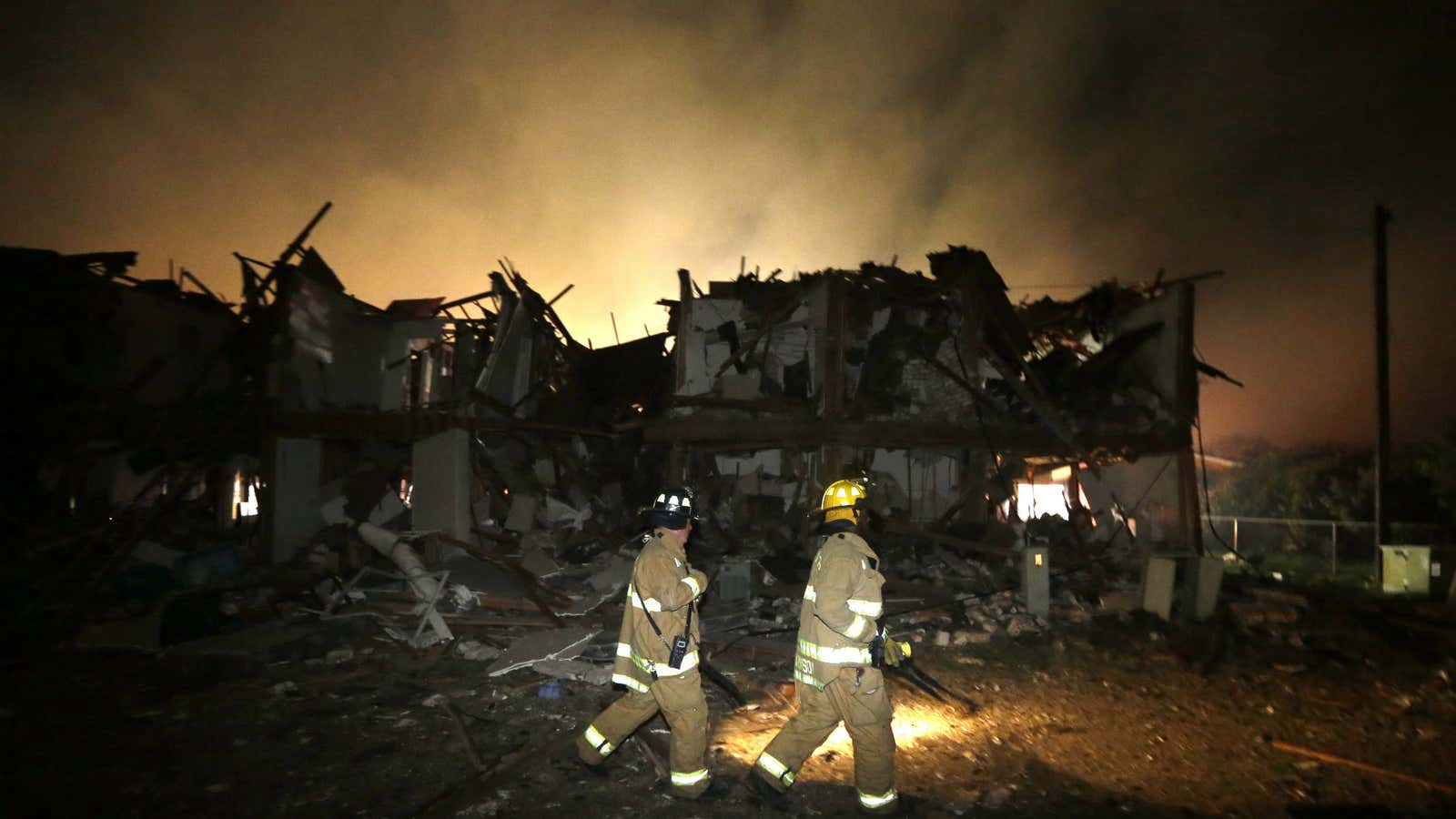The fertilizer production facility in West, a small town near Waco in Texas, was conducting the final steps necessary to convert natural gas into plant food. That’s been the basic recipe for fertilizer ever since a German chemist named Fritz Haber created the process that bears his name (along with his colleague Carl Bosch) in 1909.
Haber is a fascinating guy. His method for creating fertilizer is responsible for sustaining a huge percentage of the human race, but he also ran Germany’s poison gas program in World War I, which eventually led to the gassing of Jews in the Holocaust—including his own relatives. (This great episode of Radiolab explores the paradoxical scientist.)
Back to yesterday’s explosion: The West Fertilizer Co. plant had an air quality permit from the state to run a fertilizer mixing and storage facility. It had a large stockpile of anhydrous ammonia, which is synthesized from natural gas and atmospheric nitrogen using the Haber-Bosch process. The Dallas Morning News reported that West Fertilizer’s filings with federal and local environmental officials claimed that its plant posed no risk of a fire or explosion.
Ammonia is used to make ammonium nitrate, a highly potent fertilizer and explosive. There have been more than two dozen major ammonium nitrate accidents in the past hundred years, according to a list compiled by Wikipedia, including an explosion in Texas City in 1947 that killed hundreds of people, and a smaller incident in Bryan, Texas in 2009, where a fire caused the release of poisonous fumes.
The massive explosion in West registered 2.1 on the Richter scale. According to witness accounts (including this harrowing YouTube video), a huge fire engulfed the facility before the blast. Firefighters are now battling a complicated blaze and possible poisonous fumes, and the death toll is feared to be severe. Two deaths and more than a hundred injuries have already been reported. Flames from the blast spread to homes and other buildings nearby.




